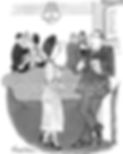Misdiagnosis and malpractice
- francoisbiquillon
- Feb 22
- 4 min read

In matters of medical liability, it is essential to distinguish between a simple diagnostic error and professional negligence. Indeed, an error in the assessment of the patient's condition does not necessarily constitute a fault justifying the questioning of the liability of the health professional.
1. Diagnostic error: definition and limits
Definition. A diagnostic error occurs when a doctor or healthcare professional fails to arrive at the correct diagnosis of a patient's condition. This may be due to confusion between two similar pathologies or a failure related to the complexity of the clinical case.
Possible non-fault nature. A diagnostic error is not automatically synonymous with fault. In French law, the judge checks whether the practitioner respected the rules of the art (the standard of care) and the medical knowledge available at the time of the facts.
Example : If the disease is very rare, or if the symptoms are atypical, it is possible that despite conscientious research and follow-up in accordance with protocols, the doctor does not arrive at the correct diagnosis. In this case, there is not necessarily professional negligence retained.
Therapeutic hazard. In some cases, diagnostic error may be a therapeutic hazard, i.e. a risk inherent in the medical act or the progression of the disease. The hazard implies that no failure of the professional can be blamed (this is a fact that cannot be controlled by medicine at the time in question).
2. Professional misconduct: a failure to meet the standard of care
Definition. Professional misconduct (or medical misconduct) involves wrongful behavior, that is, a failure to comply with the rules of the art or the diligence expected of a competent health professional placed in the same circumstances.
Criteria for fault. For there to be fault, several elements can be examined:
Failure to take basic due diligence: not carrying out an additional examination even though it is required in view of the symptoms, ignoring an analysis result, etc.
Failure to comply with protocols or good practice recommendations from health authorities.
Lack of information: not adequately informing the patient of the risks, alternatives or necessary follow-up.
Failure to comply with the duty of care: overlooking obvious clinical signs that should have alerted any competent doctor.
Concrete example of fault
Serious error : A general practitioner does not refer a patient to a specialist when clear warning signs (persistent symptoms, proven risk factors) justified a thorough examination.
Diagnostic error : A radiologist clearly negligently interprets a radiograph that nevertheless shows obvious anomalies (visible tumor lesion). If the error is considered to be the result of inattention or flagrant incompetence, the practitioner may be held liable.
3. How the judge makes the distinction
To determine whether there is only an error (without fault) or professional misconduct, the judge (or the appointed expert) will look at:
The means used by the professional
Did he request the additional tests necessary in view of the symptoms?
Did he follow the diagnostic protocols in force?
If necessary, did he consult another specialist (doctor, radiologist, biologist, etc.)?
The degree of complexity of the clinical case
Is this a rare, atypical or difficult to diagnose pathology?
Did the doctor have enough clear evidence to make a different diagnosis?
Medical knowledge at the time of the events
Some diseases or syndromes may be poorly understood or recently described; diagnosis may therefore be difficult.
The overall behavior of the doctor
Was there regular and appropriate follow-up after the first consultation?
Did he respond to the patient's repeated alerts or complaints?
4. Consequences in terms of liability
In the event of a simple diagnostic error without fault. The patient will not in principle be able to obtain compensation for the fault of the health professional, since the practitioner acted in accordance with the acquired data of medical science and did not commit any breach.
In this case, the notion of therapeutic risk (unforeseeable and non-culpable risk) can be considered, sometimes giving rise to the right to compensation through specific compensation mechanisms (ONIAM in France, under certain conditions).
In the event of proven professional misconduct. The patient may incur the civil liability (and possibly criminal liability if the misconduct is serious) of the practitioner, and obtain damages to compensate for the harm suffered (loss of opportunity, bodily, moral, financial harm, etc.).
The burden of proof generally lies with the patient (or their beneficiaries), although medical expertise is often decisive in informing the judge.
5. Key points to remember
No systematic amalgamation: Not every diagnostic error is necessarily a fault.
Standard of care: The reference is the behavior that “a good practitioner” would have adopted in the same circumstances.
Proof of fault: It is based on acts (or omissions) contrary to the rules of medical art.
Medical expertise: Often crucial in informing the judge about the nature of the error, whether it was wrongful or not, and the consequences for the patient.
In conclusion
Diagnostic error: May be the result of an objective difficulty, an atypical presentation of the disease or an uncontrollable hazard.
Professional misconduct: Implies a proven breach of professional standards or expected diligence, which could have been avoided by a normally competent and prudent practitioner.
The line between simple error and fault is essentially based on the examination of the doctor's conduct, the means implemented and compliance (or not) with professional standards.
o1-pro